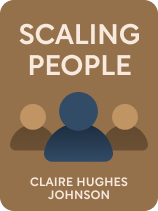

This article is an excerpt from the Shortform book guide to "Scaling People" by Claire Hughes Johnson. Shortform has the world's best summaries and analyses of books you should be reading.
Like this article? Sign up for a free trial here.
Do you have a lot of good candidates for a position? How do you decide who’s the best fit for your company?
After you’ve created a healthy hiring pipeline, the next thing you must do is hire the correct individuals for any open roles. According to Claire Hughes Johnson, doing so requires two steps: a consistent interview process and a collaborative decision-making process.
Learn how to hire the right person who’ll get the job done.
Step #1: The Interview Process
Hughes Johnson explains that you should implement a straightforward and consistent assessment rubric to learn how to hire the right person. Otherwise, you’ll have no uniform criteria against which to judge candidates, making you more susceptible to hiring someone for the wrong reasons (for example, if you found them charming). Moreover, because Hughes Johnson recommends having multiple interviewers meet with each candidate, she advises that you train these interviewers to use your standardized rubric when assessing each candidate.
(Shortform note: Experts point out that consistent rubrics are especially useful in mitigating demographic bias, as they include standardized scoring systems that apply identically to all applicants, regardless of demographic factors. For example, a consistent rubric could ensure that you fairly judge the leadership capabilities of male and female applicants rather than succumbing to the bias that male applicants are better leaders.)
Step #2: The Decision-Making Process
After the interview process, it comes time to decide which candidates to hire. For this step, Hughes Johnson recommends that you embrace a collaborative approach to decision-making, in which the hiring manager ultimately decides whether to hire a given applicant, but only does so after listening carefully to the views of the hiring committee. This approach has two benefits: First, it allows hiring managers to hear the insights of their committees, which often supplement the managers’ initial assessments. Second, because this process leaves the ultimate decision in the hiring manager’s hands, it allows them to take responsibility for the decision.
(Shortform note: In Rebel Ideas, Matthew Syed offers another reason why collaborative decision-making results in better choices than unilateral decisions. He argues that such decisions allow us to harness the wisdom of crowds, the notion that groups of individuals with diverse views are more collectively intelligent because they have greater net knowledge. However, he clarifies that these groups only make better decisions when their leaders listen carefully to subordinates’ views—otherwise, leaders might be acting unilaterally even if they appear to be listening.)

———End of Preview———
Like what you just read? Read the rest of the world's best book summary and analysis of Claire Hughes Johnson's "Scaling People" at Shortform.
Here's what you'll find in our full Scaling People summary:
- How to successfully manage employees in a high-growth environment
- The four components that your company's mission should include
- Why you should have a formal review process for your employees






